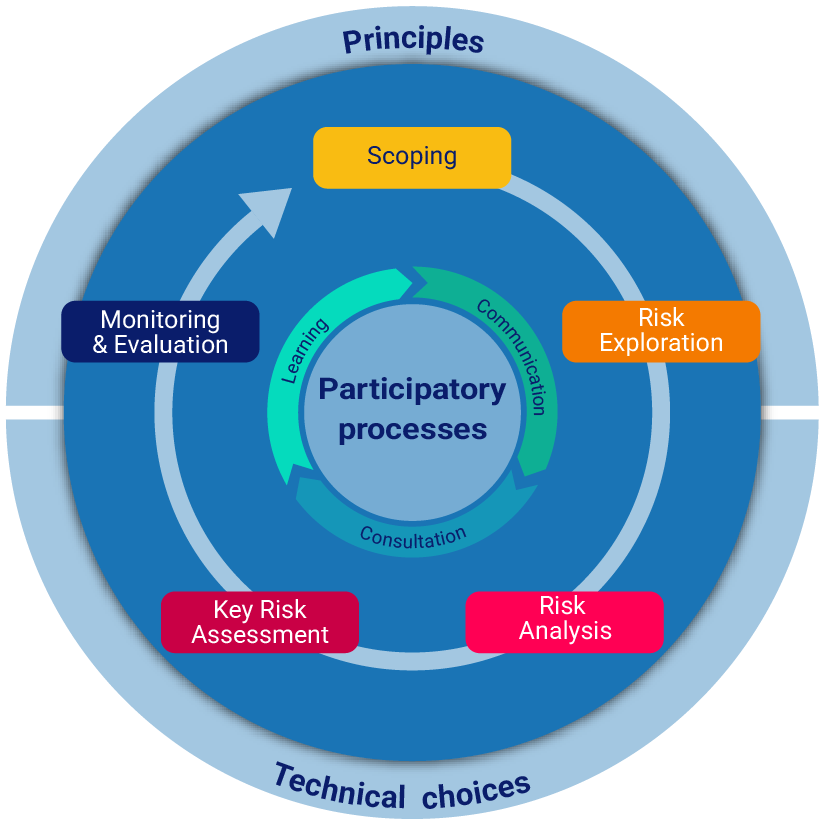What is the CLIMAAX Framework?#
The CLIMAAX Framework is designed to empower regions to conduct inclusive and harmonised Climate Risk Assessments (CRAs). It translates the ambitions of the EU Mission on Adaptation towards transformational adaptation strategies that build resilience into practice by supporting the advancement and implementation of climate risk assessments.
The Framework proposes to adhere to key principles such as social justice and equity, puts participatory processes central to the process, and provides guidance on the selection of sound technical choices for conducting climate risk assessments. The Framework consists of a five-step process (see Fig. 1) which forms an iterative cycle. The goal of the CRA Framework is to inform Climate Risk Management (CRM) strategies.

Fig. 1 The framework is based on established principles (related to social justice, equity, transparency), technical choices to be made (e.g., for parameters, climate scenarios, time horizons etc.), and participatory processes (learning, communication, consultation). These three conceptual dimensions frame the CRA steps and lead, through continued implementation, to information on climate risk that can support adaptation and climate risk management planning. Source: CLIMAAX Consortium.#
The Framework is designed to estimate and contextualize Climate Risk that can be quantified through CRA workflows. It makes sure that the CRA process and its implementation are consistent with the highest standards and best practices as well as with state-of the art scientific findings.
The CRA framework identifies five operational steps – Scoping, Risk Exploration, Risk Analysis, Key Risk Assessment and Monitoring & Evaluation – and corresponding sub-steps. The Scoping phase defines objectives, sets the context and identifies stakeholders and risk ownership. Risk Exploration is strongly informed by Scoping as it applies gathered knowledge, information and decisions and moves forward through more detailed hazard and risk exploration. This supports decisions on workflows and scenarios to use. After the risk workflow application in the Risk Analysis step, the individual risk outcome is evaluated and contextualised in the Key Risk Assessment step (severity and urgency of risk resulting in key and less urgent risks), thus identifying potential entry points for CRM and risk reduction. Monitoring & Evaluation puts emphasis on summarising the CRA process and surveilling climate risks while gathering knowledge and data that is relevant for improvements in the next iterations of the CRA.
Highlights of the CLIMAAX Framework and Toolbox entail:
Relevant steps that are encouraged to be followed for a CRA with the possibility of including quantitative and qualitative aspects for maximizing output quality.
Emphasis on Stakeholder engagement processes that ensure the development of appropriate CRA’s and uptake into strategic planning.
Selection of natural hazards that have shown or are known to have a substantial societal impact and will be affected by climate change.
Guidance on indicators for meteorological or hydrological hazards and societal or ecological impacts that can be used for designing and monitoring adaptation and risk management strategies.
Use of climate and socio-economic scenarios that are relevant for impacts and risks that needs to be accounted for regions and communities for adaptation/risk management strategies.
Note
A full, advanced description of the CLIMAAX CRA Framework can be found here.
